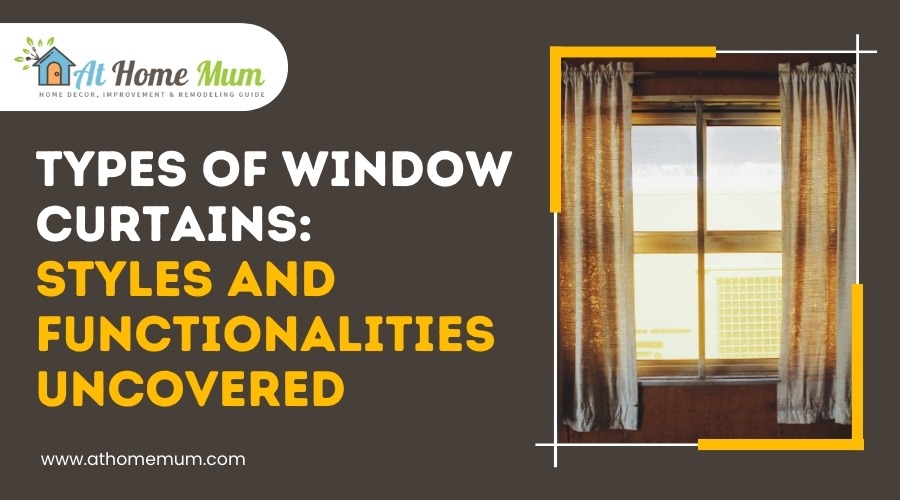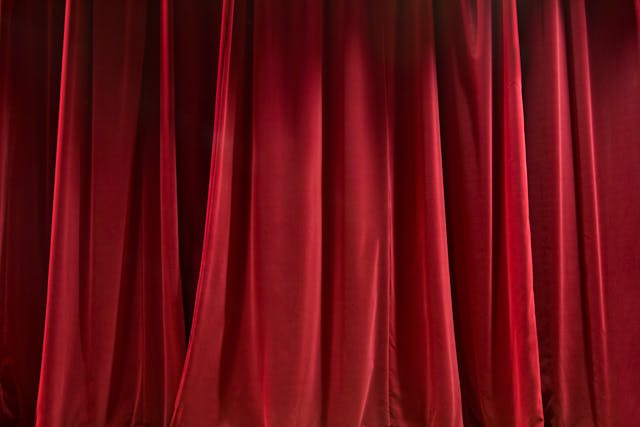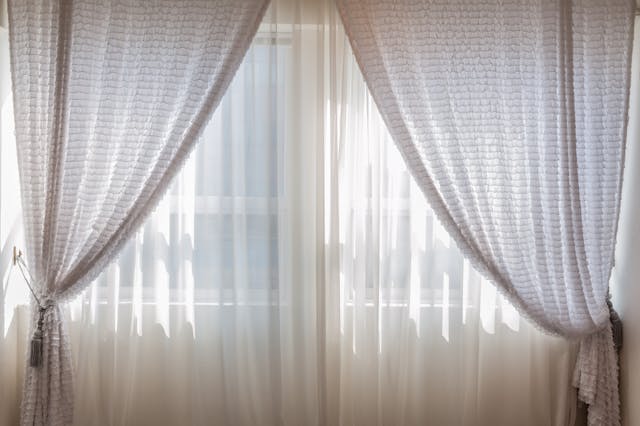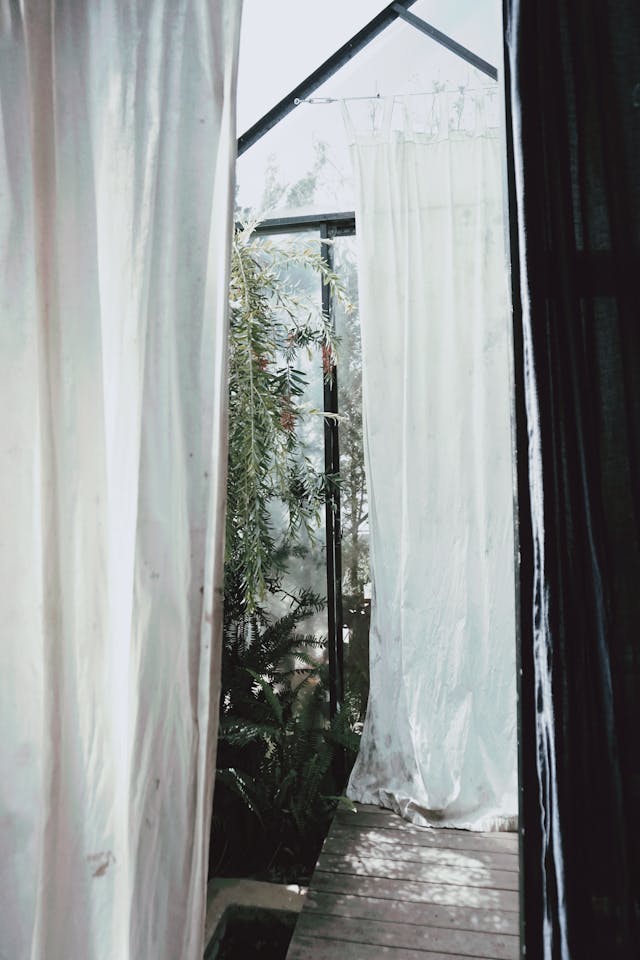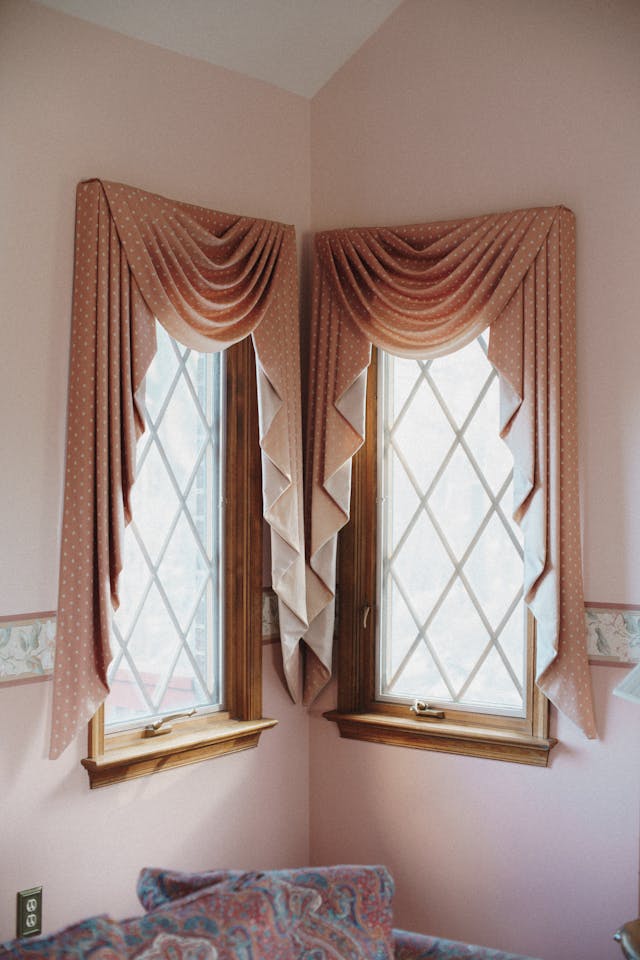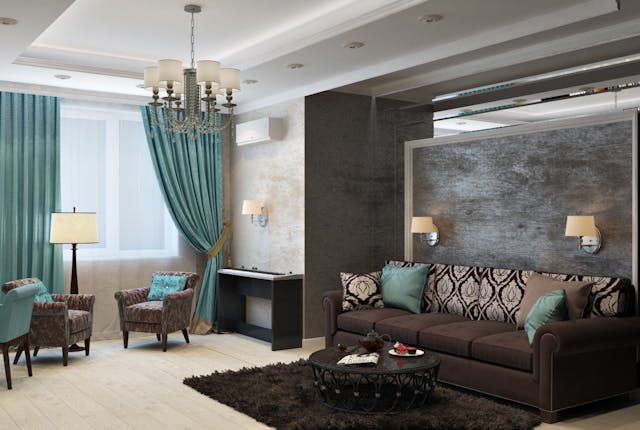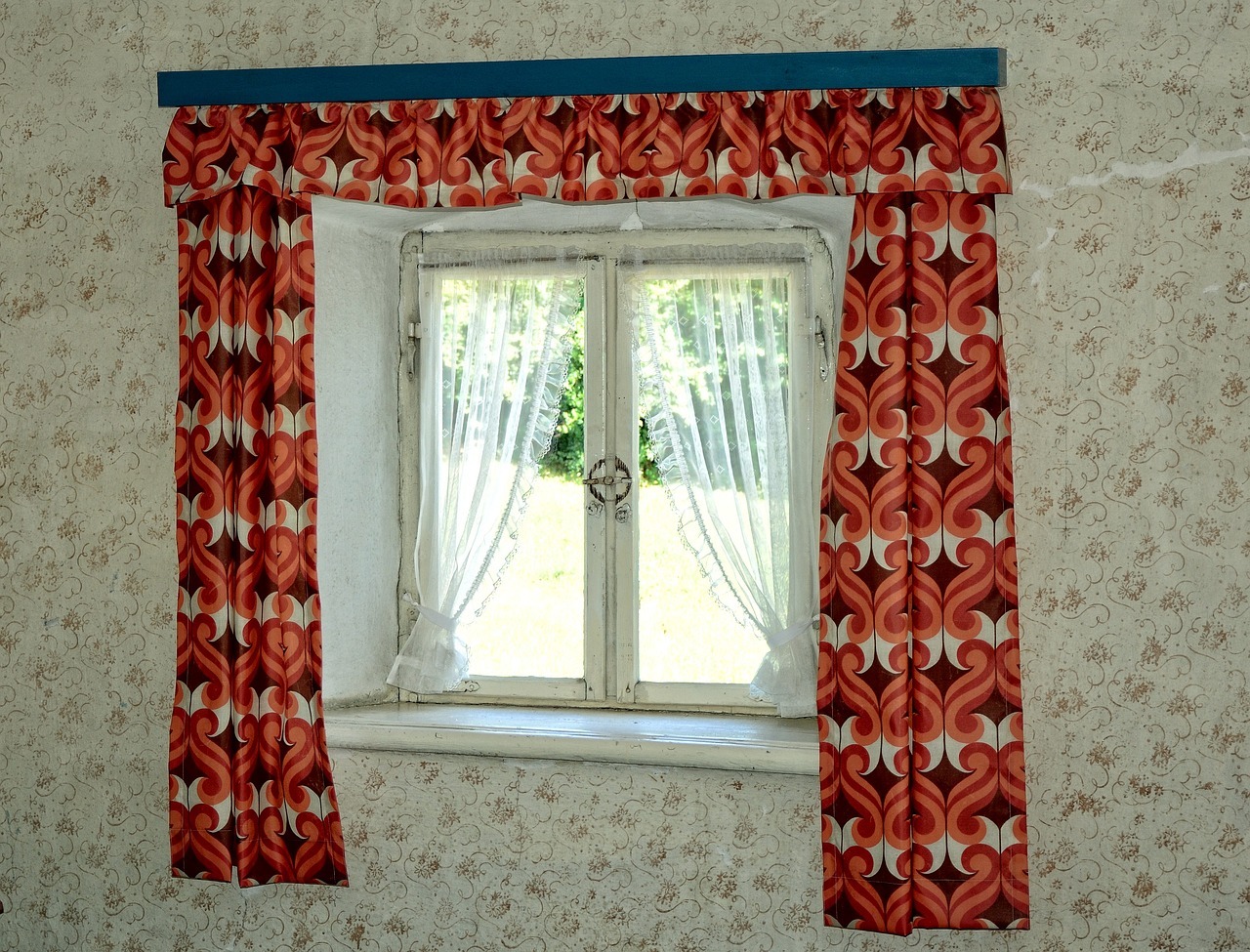Choosing the appropriate window curtains can transform the ambience and functionality of any room. Curtains are a pivotal element of interior design, serving not only as decorative pieces that add style and character to the window treatment ensemble but also as practical tools that manage privacy and light control. The diversity of curtain types available allows them to serve various roles, from blocking out light to creating an airy and open atmosphere.
With a multitude of curtain styles on the market, selection is based on the desired aesthetic, the amount of sunlight a room receives, and the level of privacy required. Materials range from sheer, lightweight fabrics that gently filter light to dense blackout curtains that ensure complete privacy and darkness. The length and cut of the fabric, along with specific finishes such as pinch pleats or box pleats, also play essential roles in achieving the intended interior design theme.
Understanding the array of curtain options is fundamental for anyone looking to enhance their living space. From single-panel curtains ideal for a minimalist look to layered solutions like Roman shades for a textured appearance, each type of curtain offers an opportunity to customize a room to one’s taste and functional needs. Whether one is updating a single room or overhauling the window treatments in an entire home, knowledge of curtain types is vital in making informed decisions that combine style and practicality.
Fundamentals of Curtains
Selecting the appropriate curtains entails understanding their materials, styles, and functions, which contribute to their performance in light filtering, privacy, and insulation.
Materials
When choosing curtains, the material is crucial for both aesthetic and functional qualities. Here’s a breakdown of commonly used fabrics:
- Linen: Sheer and lightweight, linen allows natural light to filter through while offering a casual, relaxed look.
- Cotton: Versatile and easy to clean, cotton curtains come in various levels of opacity for light control.
- Silk: Luxurious silk curtains drape well and have a slight sheen, adding an element of elegance.
- Polyester: A durable and affordable option, polyester is resistant to wrinkles and fading.
- Velvet: Thick and heavy, velvet is ideal for insulation and blocking out light.
Styles
Curtain styles can define a room’s character and serve functional purposes. Here’s an overview:
- Single Panel: A piece of fabric covering the window, often paired with a tieback to let in light.
- Panel Pair: Two separate curtain panels that frame the window on either side.
- Valance: A short curtain that covers the top portion of the window, typically used for decorative purposes.
- Pleated: These include various pleats such as pinch, box, and pencil pleats, providing a tailored look.
Functions
Curtains enhance a space not only through style but also through their functionality:
- Light Filtering: Sheer to medium-weight fabrics like linen and cotton softly diffuse daylight.
- Privacy: Thicker materials grant privacy. Cotton and velvet prove effective for lower visibility into the home.
- Insulation: Heavy fabrics like velvet can provide a layer of insulation, keeping rooms warmer in the winter and cooler in the summer.
Attachment Styles and Structures
Attachment styles and structures significantly affect the functionality and aesthetic appeal of window curtains. They dictate how the fabric hangs and contributes to the room’s overall ambiance.
Grommet and Eyelet
Grommet and eyelet curtains feature circular holes at the top of the fabric, which are typically reinforced with metal rings. These curtains slide easily on a rod, providing a clean, modern look, and are suitable for frequent usage due to their ease of movement.
- Grommet (Eyelet)
- Metal reinforced circular holes
- Easy movement along the rod
Rod Pocket
Rod pocket curtains have a channel sewn into the top that lets them slide directly onto the rod. This design offers a gathered appearance and is an excellent choice for a casual or traditional setting, where the curtain isn’t frequently drawn.
- Rod Pocket
- Sewn-in channel for the rod
- Gathered fabric appearance
Tab Top
Tab top curtains are identified by fabric loops—or tabs—at the top, which are threaded onto the curtain rod. They tend to hang in a more relaxed manner and evoke a casual, airy ambiance in a space.
- Tab Top
- Fabric loops as attachments
- Relaxed, airy feel in the room
Pleated Varieties
Pleated curtains add a tailored, classic look to windows, with various pleat styles creating different aesthetic effects. The main types include:
- Pinch Pleat: Fabric is gathered into groups of three or more folds and pinched at the bottom to fan out at the top.
- Box Pleat: Fabric folds are tailored to create deep folds down the full length of the curtains, providing a structured look.
- Goblet Pleat: Rounded pleats are formed at the top of the curtain, similar to a goblet’s shape, offering an elegant aesthetic.
- Pencil Pleat: Narrow pleats resemble pencil lines and offer a more subtle pleated style.
| Pleated Style | Description | Aesthetic |
|---|---|---|
| Pinch Pleat | Three or more folded gathers, pinched at the bottom | Tailored, classic |
| Box Pleat | Deep folds down the full length | Structured, formal |
| Goblet Pleat | Rounded top that resembles a goblet | Elegant, decorative |
| Pencil Pleat | Narrow, continuous pleats | Subtle, versatile appeal |
Each pleated style brings a distinct level of formality and texture to the room, with pleated panel curtains often used in more traditional or formal settings. The attachment style should align with not only the room’s design but also the practical considerations of curtain usage.
Specialized Curtain Types
This section explores window curtains designed for specific functions within homes, such as controlling light and enhancing privacy.
Blackout Curtains
Blackout curtains are designed to block out light almost completely, making them ideal for bedrooms and media rooms where controlling natural light is desired. These curtains typically feature a densely woven or layered fabric to prevent sunlight from penetrating, ensuring that the room remains dark even during the day.
Sheer and Semi-Sheer Curtains
Sheer curtains are made with lightweight, translucent fabrics such as voile or lace. They allow sunlight to gently filter through while offering a measure of privacy. Semi-sheer curtains offer a similar aesthetic but provide slightly more privacy. Both are perfect for living areas where the balance between light and privacy is paramount.
Cafe Curtains
Cafe curtains cover only the lower portion of a window, providing privacy while still allowing plenty of natural light to enter from the top half of the window. They are commonly used in kitchens and bathrooms, balancing privacy needs with an open, airy feel.
Curtain Lengths and Their Impact
Choosing the right curtain length is crucial as it affects both the functionality and the aesthetic appeal of a room. It can alter the perception of a window’s size and the room’s overall height.
Standard Lengths
Standard curtain lengths typically include 63 inches, 84 inches, 95 inches, 108 inches, and 120 inches. Each serves different window sizes and room styles:
- 63-inch curtains are termed “sill length” and are a match for shorter windows, ending just at or slightly below the windowsill.
- 84-inch curtains, known as “apron length,” extend slightly beyond the sill, roughly 4 inches from the windowsill, suitable for casual settings.
- 95-inch curtains often fall just above the floor, ideal for achieving a tailored look without actually touching the floor.
These lengths are widely regarded for their versatility, fitting most residential windows while enhancing the space’s visual harmony.
Extra-Long Curtains
Curtains that surpass the standard drop lengths, such as floor-length and puddle-length curtains, bring a sense of drama and elegance.
- Floor-length curtains should barely kiss the floor, avoiding any actual break or fold. This length is often seen in living rooms, creating a polished and refined appearance.
- Puddle-length curtains, where the fabric “puddles” on the floor, add an opulent and romantic feel to the design of the room. They are typically used in formal settings and require extra fabric, anywhere from 6 to 8 inches, to achieve the desired effect.
A window scarf, another decorative option, drapes across the top of the window and can be used alone or with other curtain types for an added visual element. The length of the scarf should be chosen to complement the overall design and curtain lengths used.
Window Curtain Aesthetics
When selecting window curtains, one must consider not only the practical aspects but also the aesthetic influence they bring to a room. The right combination of color, pattern, and decorative touches can transform the visual appeal of a space.
Color and Pattern
Color: Curtains offer an extensive palette to adorn windows, with options ranging from monochromes to vibrant hues. They can act as accent pieces with bold colors or blend with the walls for a more uniform look. Pale shades reflect light, making a room feel larger, while dark colors can add drama and absorb light, which may be ideal for bedrooms or media rooms.
Pattern: From simple solids to complex prints, patterns contribute personality to a room. Geometric shapes can create a modern vibe, florals impart a soft, romantic feel, and stripes can either elongate a window or establish a timeless elegance.
Layers and Texture
Layers: Implementing multiple layers of curtains can enhance both functional and aesthetic properties. One might pair sheer curtains with heavier drapes, allowing for light filtration and privacy control. Layers can also introduce depth and richness to the window dressing.
Texture: The texture of curtains contributes to the room’s sensory and visual warmth. Velvet curtains exude luxury and can insulate a room, while linens provide a light and airy feel. Slub silk or tweed can add a touch of sophistication and tactility.
Decorative Elements
Tiebacks: These functional accessories hold curtains back to allow light in while also adding an element of style. Whether made of fabric, rope, or metal, tiebacks can be ornamental and vary greatly in design from simple hooks to tasseled pulls.
Valance: A valance tops a window and can conceal the curtain hardware, offering a neat finish to the window treatment. They come in various styles such as tailored, balloon, or swag, and can match or contrast with the curtains below.
Curtain aesthetics are paramount in complementing the overall design of a room. Colors and patterns set the mood, layers and texture add complexity, and decorative elements provide the finishing touches.
Choosing the Right Curtains
Selecting the ideal curtains is an exercise in balancing function with aesthetics, considering both the specific needs of each room and the overall interior design.
Room by Room Considerations
Living Rooms: In the living space, one has a choice to opt for elegance or a more laid-back ambiance. Pleated panel curtains offer a sophisticated feel, perfect for formal settings. They come in uniform pleats, which hang elegantly and are a timeless décor element. For a casual setting, single panel curtains can be a flexible choice, easy to manage and capable of creating a relaxed atmosphere.
Bedrooms: Privacy and light control are paramount in bedrooms. Heavier fabrics like velvet bring a luxurious touch and are effective at blocking light for better sleep quality. If privacy is less of a concern, sheer curtains are a great option to let natural light in, keeping the room airy and bright.
Matching with Decor
When integrating curtains with interior design, their relation to room decor is crucial. The style of curtains should complement the existing furniture, color palettes, and overall room fashion. Here’s a brief guide:
- Traditional Decor: Opt for curtains with rich textures and deep colors. Pleated curtains can add to the room’s classical elegance.
- Contemporary Decor: Go for curtains with clean lines and minimalistic design. Neutral colors or bold geometric patterns can accentuate a modern aesthetic.
- Custom-made vs Affordable: Custom-made curtains allow for personalization to match decor precisely, though they come at a higher cost. Ready-made curtains provide a more affordable option, available in standard lengths and various styles that can still enhance the room’s fashion.
When choosing curtains, one should always contemplate the alignment of style to their existing interior design, ensuring a cohesive and pleasing look throughout the home.
Installation and Accessories
The installation of window curtains is greatly enhanced by the proper selection of hardware accessories. Curtain rods, rings, clips, tiebacks, and holdbacks are essential components that not only aid in the functionality of curtains but also contribute to the overall aesthetic.
Curtain Rods
Curtain rods serve as the foundational accessory for hanging curtains. They come in various materials, including wood, metal, and plastic, and can range from simple, straight designs to more decorative styles. The installation process generally involves measuring the window, leveling the rod, securing brackets into the wall, and then placing the rod. Durability is key, as the rod must support the weight of the curtains.
- Materials: Wood, Metal, Plastic
- Support: Requires secure brackets
- Installation: Measure window, level, secure brackets, place rod
Rings and Clips
Curtains can be hung using rings or clips, which allow for ease of movement along the rod. Metal rings are common and often feature a small clip to attach the curtain fabric. They provide a smooth glide when drawing curtains open or closed and are available in finishes that complement curtain rods.
- Metal Rings: Durable, smooth glide
- Clips: Easy to attach and detach curtains
- Functionality: Ease of curtain movement
Tiebacks and Holdbacks
Tiebacks and holdbacks are accessories used to hold curtains open and create a polished look. Tiebacks are made from fabric, cord, or metal and wrap around the curtain, while holdbacks are mounted to the wall and can be ornamental. These accessories not only add to the decor but also allow control over the amount of light entering the room.
- Tiebacks: Fabric, Cord, Metal
- Holdbacks: Wall-mounted, ornamental
- Light Control: Adjusts room lighting
Curtain Care and Maintenance
Proper maintenance of curtains is essential for their longevity and aesthetic appeal. Different materials require specific care methods to preserve their quality and appearance.
Cotton and Linen: These natural fabrics may shrink when washed. It’s advisable to clean them at a moderate temperature and air dry to avoid shrinkage.
- Washing: Machine wash on a gentle cycle with mild detergent.
- Drying: Tumble dry on low heat or line dry.
- Ironing: Iron while still damp on the appropriate fabric setting.
Silk: Delicate and luxurious, silk curtains should be handled with care.
- Washing: Hand wash or dry clean to prevent damage.
- Drying: Lay flat or hang to dry away from direct sunlight.
- Ironing: Use a low heat setting or a cloth barrier between the iron and fabric.
Velvet: This dense material is durable but requires special attention.
- Cleaning: Spot clean or dry clean only.
- Maintenance: Regular brushing can maintain its plush texture.
Sheer Curtains: Often made from light fabrics like lace, sheers need gentle care.
- Washing: Hand wash or machine wash in a delicate bag.
- Drying: Hang to dry to retain shape.
Care Tips:
| Material | Method |
|---|---|
| Synthetic | Wash in cool water; avoid high heat drying or direct sunlight to prevent melting or warping. |
| Burlap | Spot clean; rough fabric can be damaged by machine washing. |
Regular dusting or vacuuming with an attachment will prevent dust build-up. Always consult care labels before washing. For durable maintenance, repairs such as re-hemming or replacing worn tie-backs should be made promptly.

